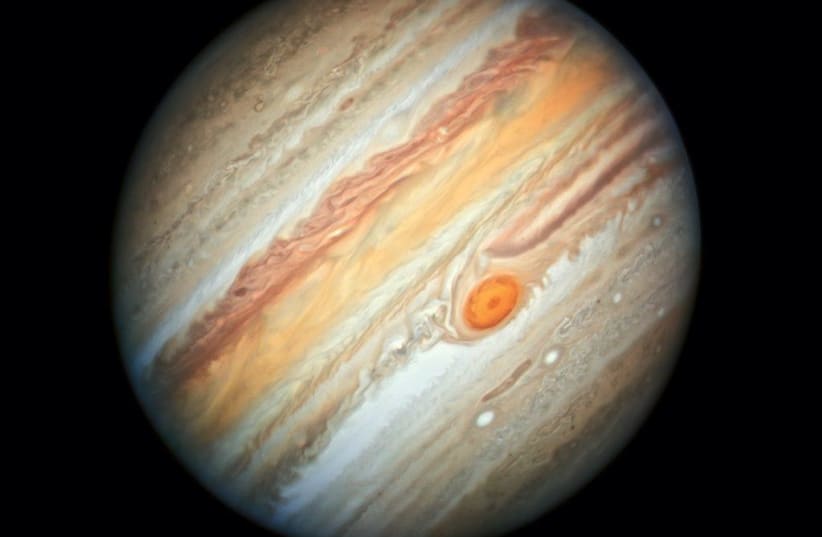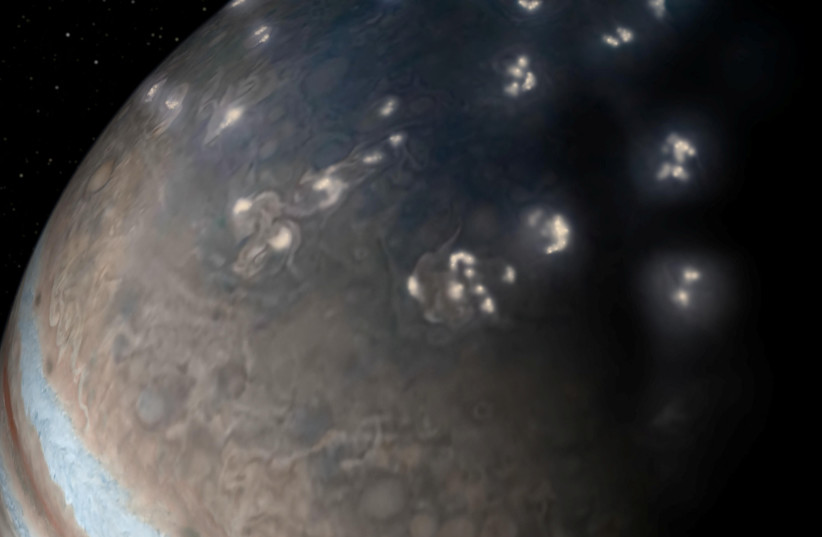The color changes of Jupiter's bands is due to torsional oscillations according to new research at universities across the United Kingdom, Spain, and Japan.
The peer reviewed article published earlier this month uses data from NASA's Juno space probe, which has been orbiting Jupiter since 2016, to track the planet's internal magnetic field.
The probe has stayed in orbit significantly longer than anticipated allowing scientists to gather more data than originally planned, giving them a much better and clearer picture of the changes in magnetic fields.
Jupiter is notable among the planets for having the most colorful exterior with reds, whites, and oranges being visible to the naked eye. The colors are even more interesting because they are split into neat bands covering the surface from top to bottom.
The different colored bands have puzzled scientists for a while because as well as being split by color they spin in alternating directions, some spinning west the others east.
The researchers concluded due to the data that internal magnetic fields were responsible not only for the separation of the different bands but also their different patterns of movement.
The Great Blue Spot
The magnetic field has been found to oscillate, meaning their forces cause a constant back and forth movement on some features of Jupiter, such as the Great Blue Spot.
The Great Blue Spot is not to be confused with the Great Red Spot a giant storm which has been raging for at least two centuries. The Great Blue Spot is a huge area of strong magnetic activity which has been slowly drifting eastwards. New data suggests that this drift is slowing down however, leading the researchers to believe that it may be linked to this magnetic oscillation and may soon start drifting westward as a result.
However, there are still many mysteries on Jupiter to be solved, for example the researchers suggest that more research be done to conclude how exactly the magnetic waves affect Jupiter's storm. They also suggest that unifying research between the upper atmospheric levels and lower atmospheric levels would go some way toward helping solve these complications.

